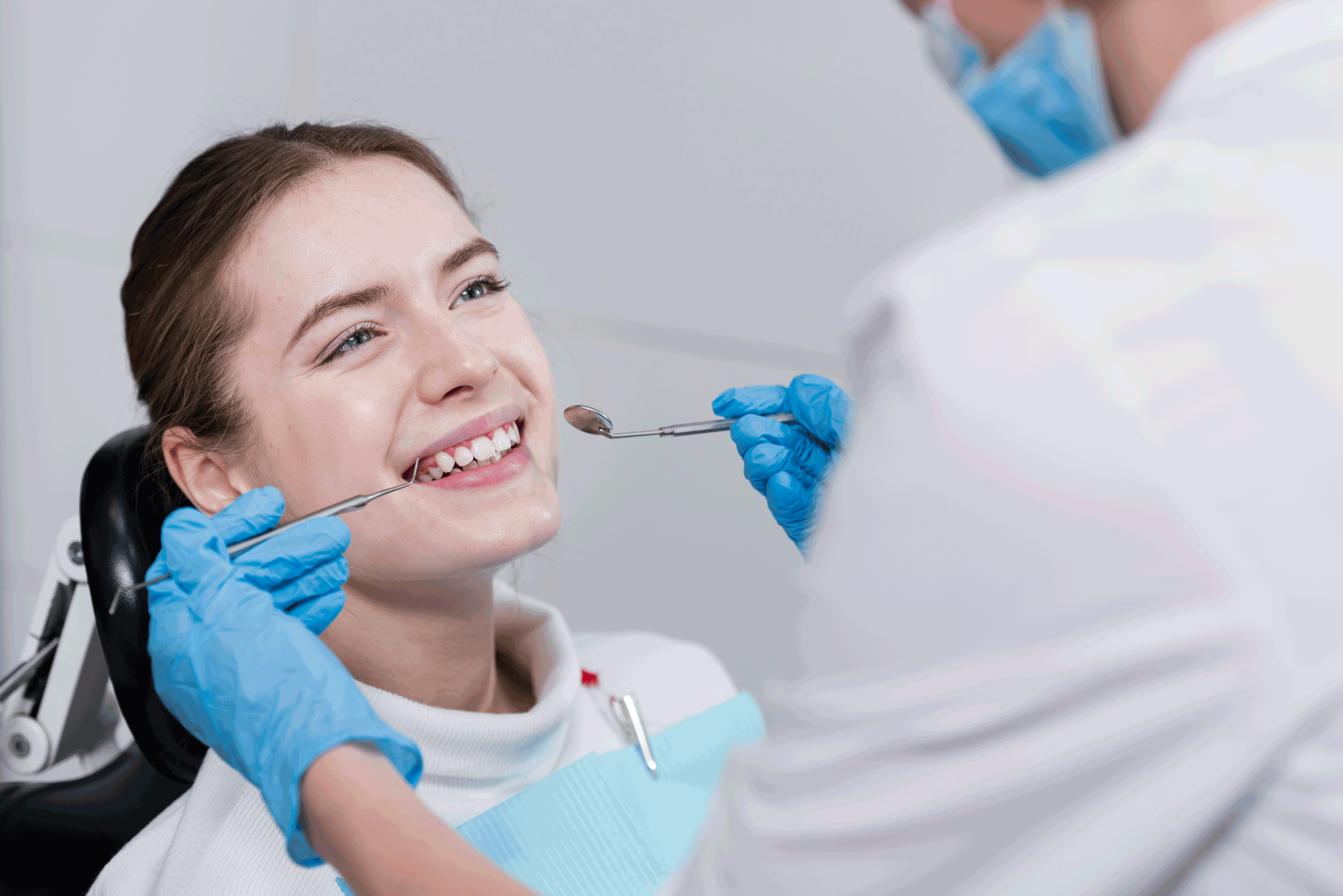
Teeth cleaning and prevention is the primary way to control plaque, a colorless bacteria that sticks to the surface of your teeth, and calculus, a harder mineral deposit. These are the main sources of decay and disease. By maintaining a proper routine of daily hygiene, you can avoid most oral maladies. Early detection and follow up prevention are the key to avoiding tooth decay and gum disease. A good home dental brushing and flossing regimen, in addition to regular check-ups and visits, can spare you many expensive dental treatments. Our hygienist of pflugerville dental care is available to assist you with your hygiene and management of your gums. We do a comprehensive dental exam will performed by the doctor at your initial dental visit.
Dental Exams
At regular check-up exams we will include the following:
-
- Examining the diagnostic x-rays (radio graphs): Essential for detection of decay, tumors, cysts, and bone loss. Radio graphs also help determine tooth and root positions.
- Oral cancer screening: Check the face, neck, lips, tongue, throat, tissues, and gums for any signs of oral cancer.
- Gum disease evaluation: Check the gums and bone around the teeth for any signs of periodontal disease.
- Examination of tooth decay: All tooth surfaces will be checked for decay with special dental instruments.
- Examination of existing restorations: Check current fillings, crowns, etc.
Professional Cleaning
Regular dental cleanings, performed by a certified dental hygienist, are a crucial part of preventative dental care. By removing plaque and tartar, your dental hygienist enhances your oral health and minimizes your risk of gingivitis and periodontal disease. Your certified dental hygienist will utilize a manual device to scale away moderate plaque and tartar buildup, or an ultrasonic device to scale away heavier buildup. The cleaning is finished with polishing, a pleasant procedure that deep cleans the surface of teeth, removes stains, and leaves the mouth feeling clean and refreshed. Your cleaning appointment will include a dental exam and the following:
-
- Removal of calculus (tartar): Calculus is hardened plaque that has been left on the tooth for some time and is now firmly attached to the tooth surface. Calculus forms above and below the gum line and can only be removed with special dental instruments.
- Removal of plaque: Plaque is a sticky, almost invisible film that forms on the teeth. It is a growing colony of living bacteria, food debris, and saliva. The bacteria produce toxins (poisons) that inflame the gums. This inflammation is the start of periodontal disease!
- Teeth polishing: Remove stain and plaque that is not otherwise removed during tooth brushing and scaling.
Gum Disease
Diagnosis:
Early signs of gum disease include redness, swelling, or inflammation around the gum line. If these warning signs appear, your dentist will check for hardened plaque, also known as tartar or calculus, below the gumline. Finally, your dentist may use a tool called a probe to test gums for bleeding and measure periodontal pockets. When gums are unhealthy, they pull away from the teeth, forming these pockets. If the periodontal pockets are deeper than 3mm, advanced periodontal disease is confirmed.
Treatments:
Deep cleaning can effectively control and reverse gum disease by removing the germs that lead to infection. This deep cleaning involves techniques called scaling and root planing. Scaling involves scraping away plaque and tarter from above and below the gumline. Planing involves smoothing out rough surfaces of teeth which can foster the bacteria growth that leads to infection. Left with clean, smooth teeth, patients will notice reduced redness and inflammation as the gum is better able to attach to the tooth enamel. Dentists may prescribe antibiotics or mouth rinses to kill any remaining bacteria after scaling and planing procedures are performed.
Periodontal Disease:
Periodontal disease is marked by the breakdown of structures that surround, secure, and support the teeth. These structures include the jawbones, gums, and fibers which anchor the teeth to the gums. Periodontal disease is usually a result of untreated plaque buildup, and is the number one cause of tooth loss in adults. However, regular checkups and a strong home care regimen easily prevent periodontal disease.
Gingivitis:
Gingivitis is the early stages of periodontal disease, when only the soft tissues of the mouth are affected. Plaque buildup leads to tartar and bacteria below the gumline, which leads to inflamed, irritated, or bleeding gums. The good news is, gingivitis is reversible. A good professional cleaning, followed by regular brushing, flossing, and checkups, restores gums to good health by removing plaque and bacteria.
Video of Teeth Cleaning

